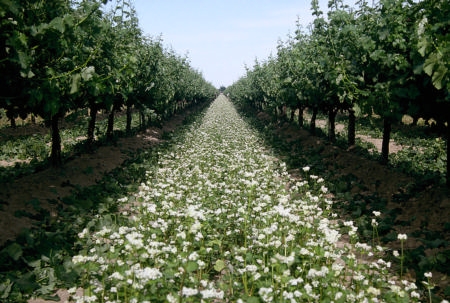As in all industries, there are some activities in farming that can be harmful to the environment. Improper use of chemical inputs, poor water management, monoculture, and reliance on imported pollinators creates an increasingly fragile and unsustainable industry.
Agroecosystems rely on diversified farming systems to create natural biodiversity. This type of farming system is much more sustainable as well as less damaging to the environment.
Ways that biodiversity can be increased on the farm include: growing multiple crops, interspersing natural habitat with crops and livestock, planting cover crops, and minimal soil tillage. These practices work together to provide pollination, pest and disease control, water purification, and erosion control. In addition they build healthy, productive soil and reduce water usage.
To learn more, please visit The Berkeley Center for Diversified Farming Systems.

- commercial agriculture
- food security
- Initiative A Clean Water
- Initiative B Abundant Food
- Initiative C Sharing Science
- Initiative D Sustaining Ecosystems
- Initiative F Families and Communities
- Initiative G Safe Food
- Initiative H Managing Pests
- Initiative I Energy for the Future
- natural resources
- organic production
- pollinators
- soil